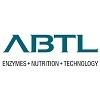
Future of poultry meat in SEA


The role of exogenous enzymes in promoting growth and improving nutrient digestibility in poultry.??
1. The value of dietary exogenous enzymes in promoting growth and efficiency of feed utilization is well recognized in poultry industry.
2. In a case of high-cost yellow corn, several feed producers are choosing to replace yellow corn with other ingredients that have lower nutritional value like wheat, , bajra, broken rice, barley or sorghum etc.
3. These crops are rich in non-starch polysaccharides (NSPs), and there is an inverse relationship between the content of NSPs in the feed and its nutritional value. ??
5. Dietary supplementation of enzymes can enhance the nutritional value of crops containing high contents of soluble NSPs. ??
6. Enzymes, which may not be produced in large levels by the birds, are suggested to be supplemented to the diets.
7. The anti-nutritional activity of cell wall NSPs had impaired impacts on growth rate and feed efficiency (Kalantar et al., 2015 ?).
8. Main aim of the usage of alternate raw materials (RM) in poultry feed is based on the inclusion of safe non-conventional ingredients which can be included as an alternative to expensive ingredients without impacting the growth and performance of the birds. ?
9. These alternative feed ingredients pose challenges like anti-nutritional factors like non-starch polysaccharides (NSPs), lower protein digestibility, and phytate.
10. Risks associated with alternative raw materials can lead to performance fluctuations, poor productivity, and possible gut health problems if anti nutritional factors are not taken care.
11. Enzymes plays a important role in poultry nutrition in nuetralising anti nutritional factors.
12. Xylanases, proteases, and phytase enzymes can enable feed producers to address these challenges and can have a significant impact on performance and feed cost. ??
14. Today, it can be said that enzymes have a much bigger role in poultry nutrition and their benefits are far beyond the conventional parameters like bird weight management, feed conversion, and feed cost optimization.???
14. Using enzyme technology is the principle rationale to improve the nutritive value of feedstuffs (Bedford and Partridge, 2001 ?). Also, the economic considerations determine the importance of feed enzymes domestically and internationally.
15. The high content of fiber limits usage of sunflower meal (SFM) in poultry diets. The solution for this problem may be using exogenous enzymes in accordance with the suggestion by Tavernari et al. (2008) ? that these hydrolyze the NSPs, which could be used by avian and increase energy utilization.
16. Alagawany et al. (2017) ? noticed that enzyme addition to diets which contained SFM up to 50% substitution for soybean meal caused significant (P<0.01) improvement in BW and BW gain.
17. Gade et al., 2017 ?). Kocher et al. (2015) ? showed that supplementation of enzyme mixture (xylanase and protease) to broiler diet during the first three weeks of age improved the performance.
Right enzyme in your poultry feed as an integrated approach to improve feed efficiency and equally improving productivity.???
18. Pro- Maxyl of ABTL containing protease , Xylanase , mannanase and phytase enzymes enhances dietery protein and carbohydrate digestibility and inclusion levels are 500 gms for tonne of feed.
a) We can reformulate feeds adjusting 70 to 80 k cal / kg , 0.6% protein and Phosphorus 0.13% in
Layer diets and 95 k cal in Broiler diets and reduce 1% protein along with 0.15 % of Phosphorus by adding Pro-Maxyl and can reduce the feed cost by Rs 1500 to 1600 for ton of feed while optimising meat and egg production in birds.??
19. Feed back from Layer and Breeder farmers :
a) Pro- Maxyl of ABTL enzymes in poultry feeds included improved productive performance and feed utilization.??
b) In Broilers field trials proved that adding Pro- Maxyl on top has significant improved FCR points by 5 to 6 based on feed formulation.??
c) In field tests when birds faces reduced performance and feed conversion efficiency , addition of Promaxyl of ABTL has improved nutrients digestibility with production performance, feed efficiency and profitability of poultry, ???
Dr V.Rajendra Prasad



.jpg&w=3840&q=75)
.jpg&w=3840&q=75)
.jpg&w=3840&q=75)

